I read an article stating that 50% of the UK’s graveyards will be full within the next 20 years. I hadn't considered this problem before and thought it had the potential to form an interesting research-led self initiated project.
The Brief: Create a proposal for ‘The Future of Graveyards’, that offers a solution to the problem of graveyards filling up in the UK, taking into account the UK’s ethnic diversity and their religious views and traditions regarding the burial of the dead. Consider new technologies, location, sustainability and it’s overall effectiveness in solving the problem.
During my research, I came across memorial reefs. A memorial reef combines a person’s ashes with a concrete mix to form an artificial reef. This reef is then placed in the sea to help marine life. I thought this was a lovely idea, and could be a viable alternative to burial.
There are a few organisations in America who provide a service to make memorial reefs, but nothing in the UK. So my initial brief to create a proposal for ‘The Future of Graveyards’ became a project to introduce memorial reefs to the UK, and I thought the best way to do that would be to create an organisation that provided the service.
I wanted the organisation to focus on the environmental benefits of memorial reefs. They help support and increase the amount of marine life in the sea, and because of this it would appeal to people with a passion for the sea or the environment.

I decided to call the organisation ReefCycle, to link to the idea of recycling and life continuing after death.
The logo features vector illustrations of fish circling, to show how you are helping continue the life cycle by having a memorial reef. I wanted the organisation to have a positive attitude towards death. To help show this, I used a bright and vibrant colour scheme and a modern sans serif typeface.
I decided to create a website for ReefCycle, as I thought it would be the most effective way to educate the public about the organisation, and introduce them to the idea of memorial reefs as an alternative to burial.
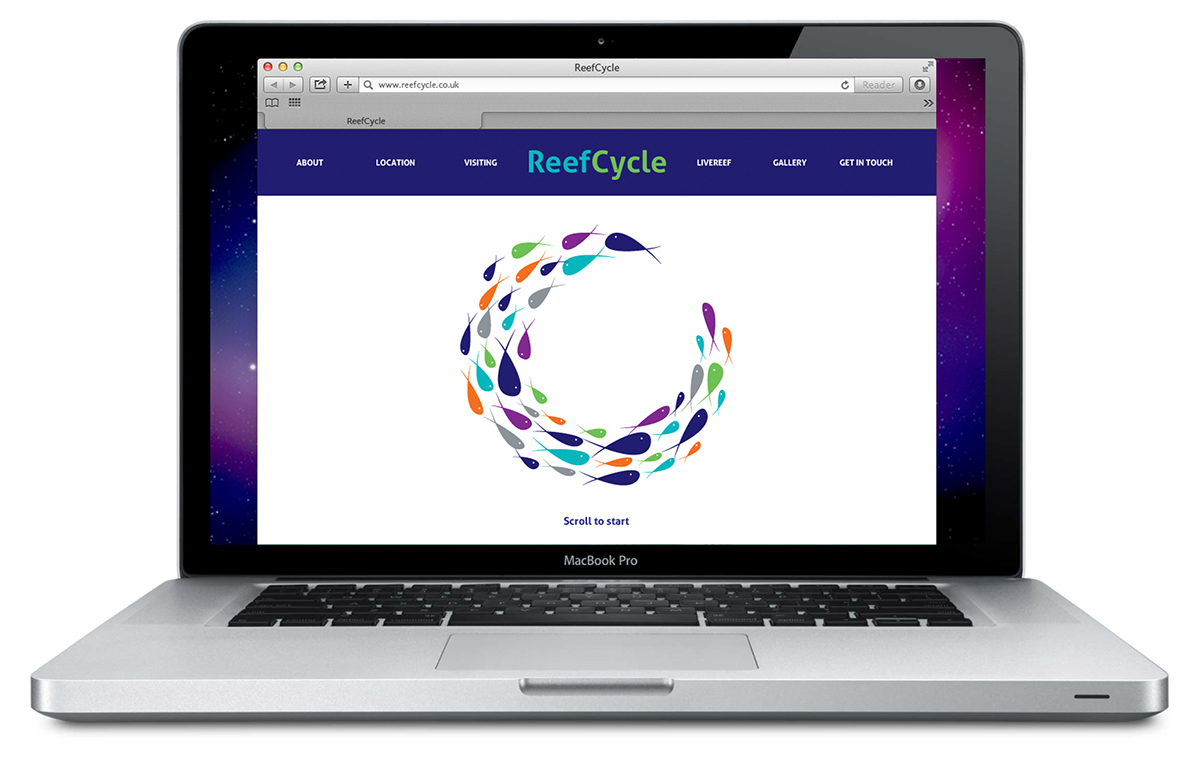
Home Screen
I wanted to give visitors to the site the feeling of diving deep into the ocean and exploring the reefs, so created a fully scrolling website. Visitors can scroll through all the sections from top to bottom, so they can learn about every aspect of the organisation and get a broad introduction to ReefCycle. Alternatively, if they want to visit a specific section, they can skip straight to each section from the navigation bar at the top of the screen.
The first few pages of the site introduce visitors to the concept of memorial reefs and explain what each section of the website contains.


There are testimonials and photos running throughout the site to break up each section.


The first section of the website is the About section, teaching visitors all about memorial reefs and what ReefCycle does. There is a page explaining what ReefCycle does, what ReefCycle believes, reasons for having a memorial reef, and how the process works.

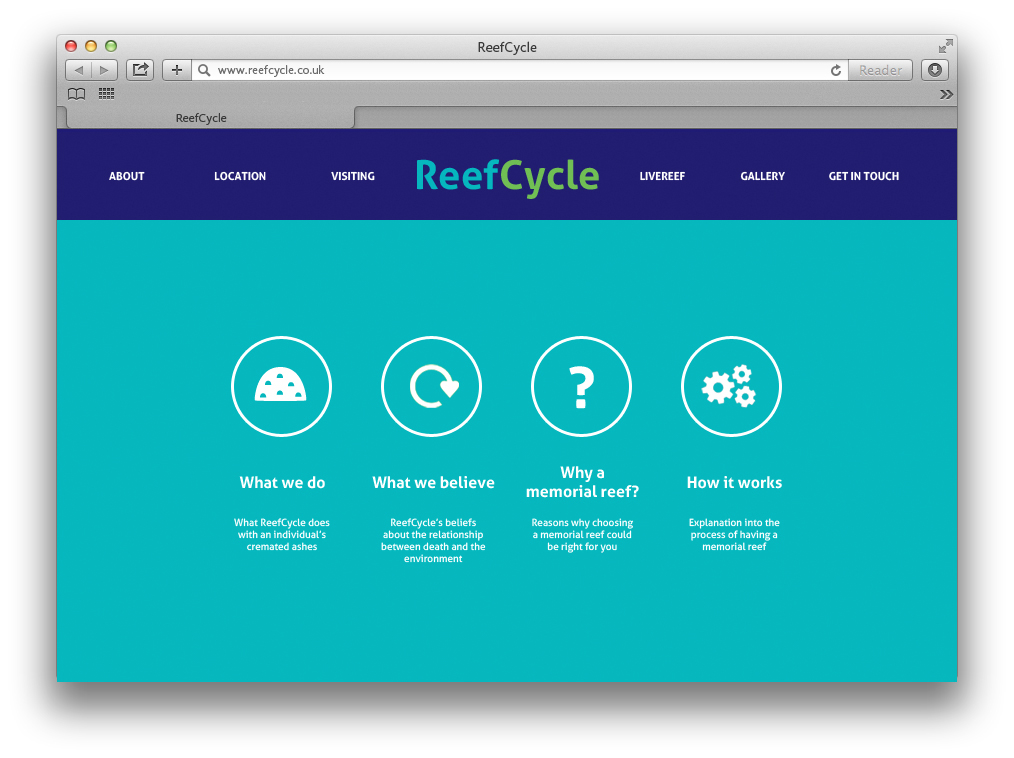


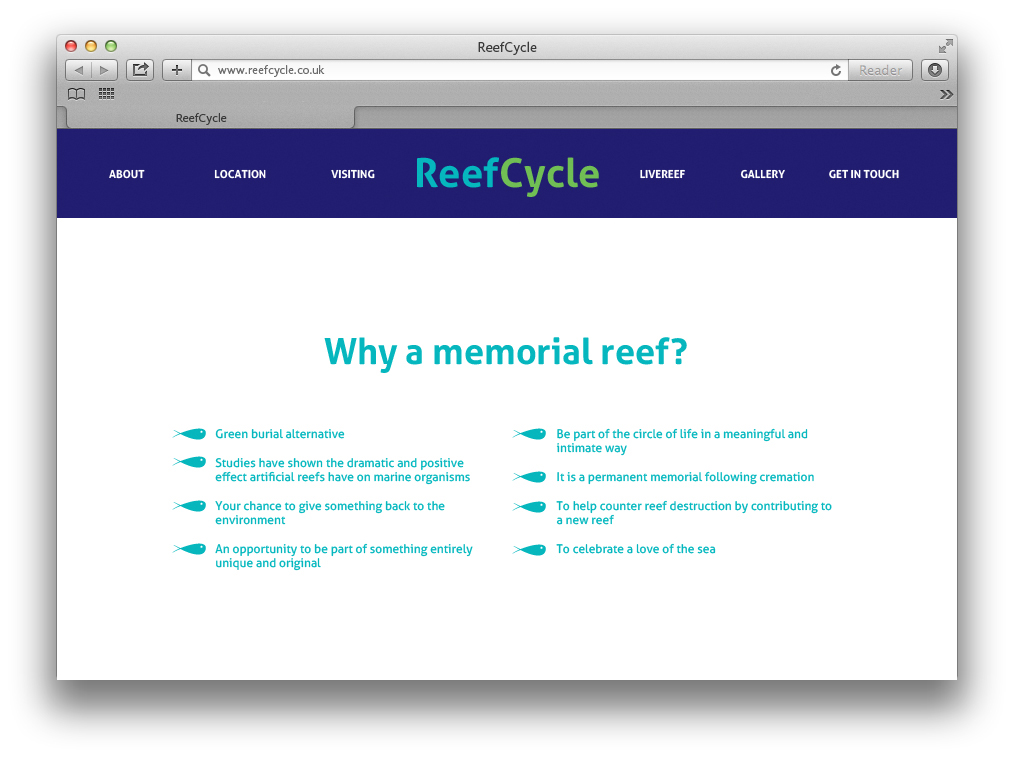

The next section is the Location section, showing visitors where the different reef sites are located in the country. Each location features a full screen photo, and a screen with more details about the site and further photos.



Next is the Visiting section. This is an important section because visitors to the site will want to know how they can access the reefs and pay respect to their loved ones, as there is no traditional graveyard to visit. Details are given about each way you can visit the site, and companies who can help you travel to the site.




The next section, LiveReef, allows visitors to watch live footage from the reefs. ReefCycle focuses on the environmental benefits of having a memorial reef, and so it is important for visitors to be able to track the progress of the reefs and see how they are helping support the marine ecosystem. There is a web cam attached to each reef, and live images are posted back to LiveReef. When visitors choose which reef site they want to watch footage from, a new tab opens with a map of the reef site. Visitors can click on a reef which will take them to live footage from that reef.

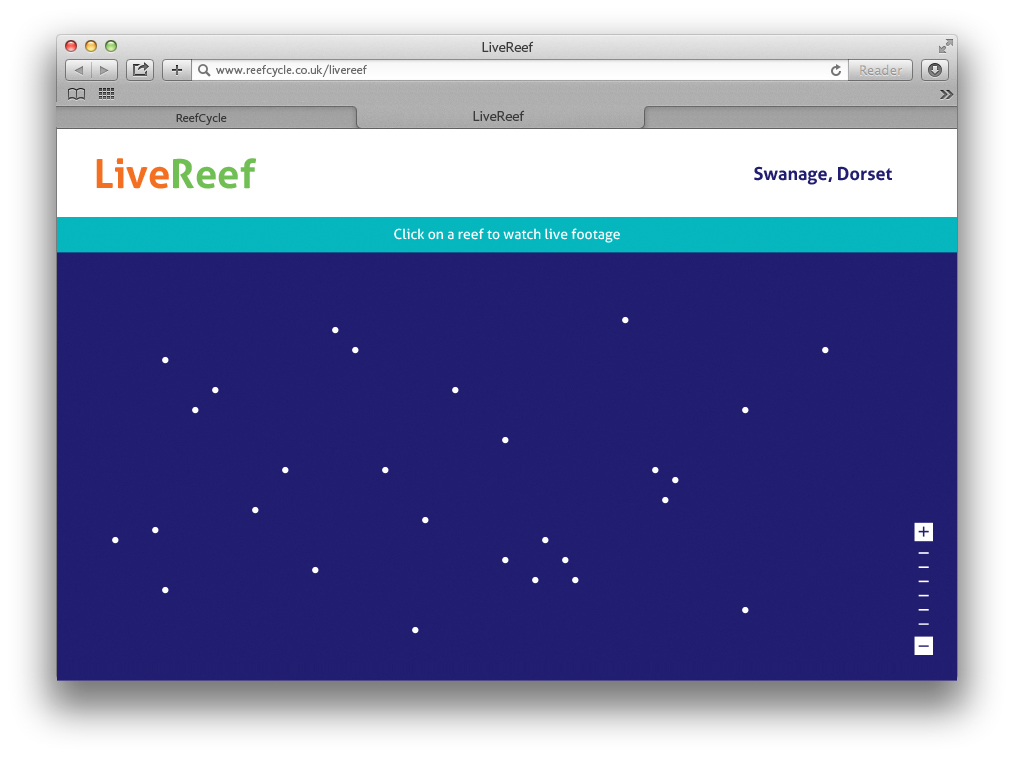

Visitors can then visit a memorial page for the person whose reef it is. Depending on the individual, this page could include messages from family, photos of the reef's development, and details of fish species which have been spotted at the site.
The next section visitors see is the Gallery section. This section allows visitors to see the most exciting things that have been happening at the reefs. There will be a photo of the day, followed by links to the main photo galleries. Visitors can choose which reef site they want to view photos from.



When visitors click on a reef site it will again open a new tab, showing them more photos. When visitors click on a photo, it enlarges, and they can share the photo to social media, helping spread awareness of ReefCycle, or view the memorial page of the person whose reef the photo was taken from.


The gallery also contains a section for videos.
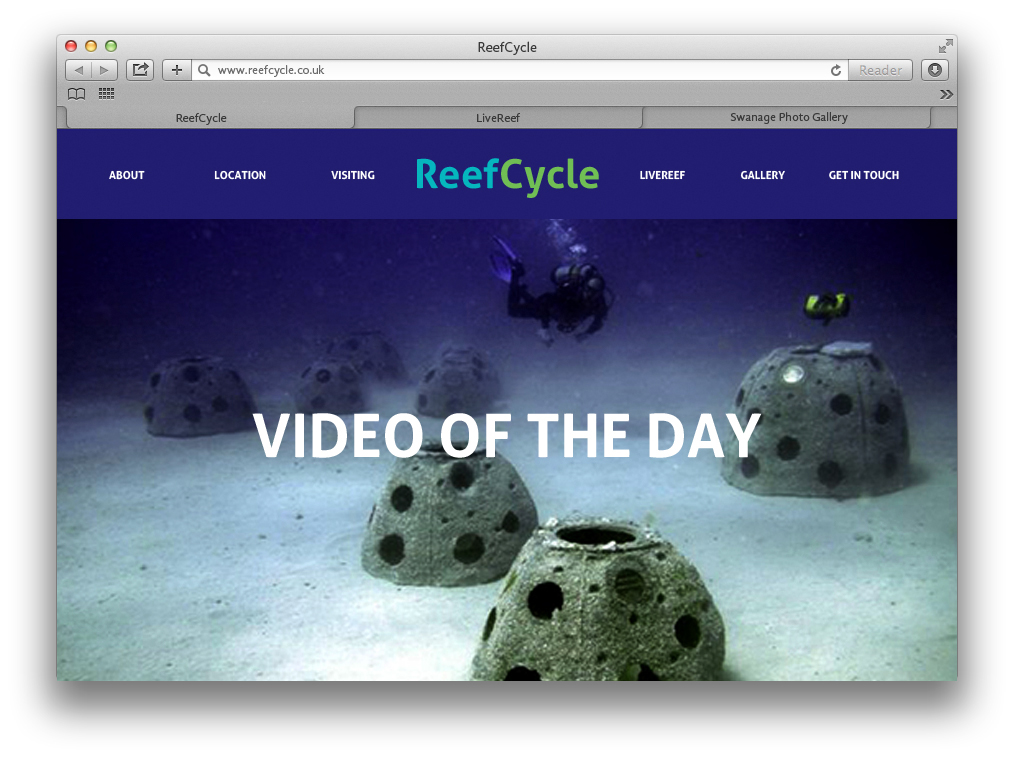

The final section of the website gives visitors contact details for ReefCycle, if they wish to enquire about a memorial reef for themselves or someone else. The site finishes with the logo. Being able to scroll through all the sections of the website allows people to explore all aspects of ReefCycle, and links back to the idea of diving deep into the ocean and exploring the reefs.



I wanted to create some advertising for ReefCycle, to lead people to the website. I used quotes to grab the attention of people who may be interested in memorial reefs and make them want to find out more on the website. These adverts could appear in magazines or newspapers, and in marine conservation centres.






